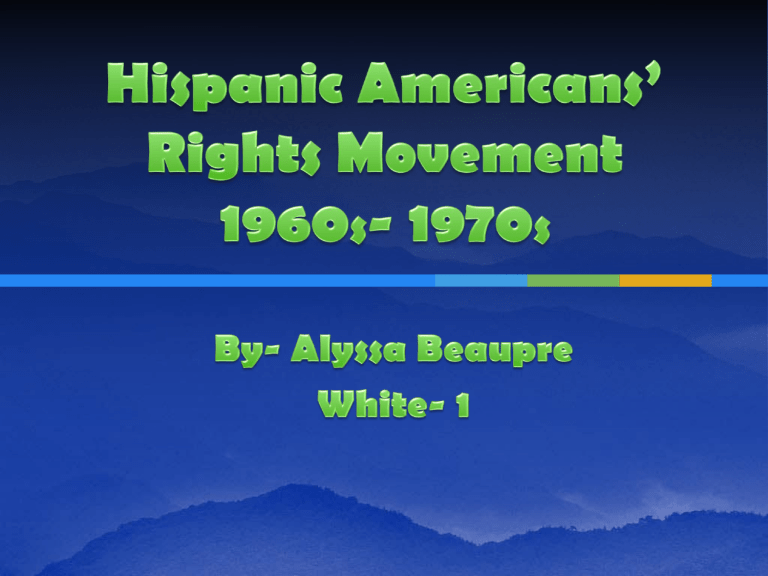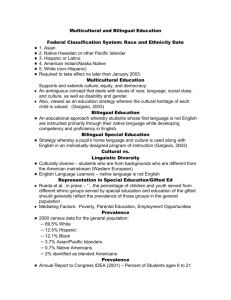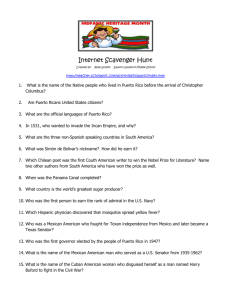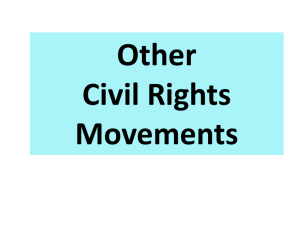Hispanic Americans` Rights Movement

Hispanic American applies to the Americans who came from
Mexico, Puerto Rico and Cuba.
Five major subgroups- Mexican Americans, Puerto Ricans,
Cuban Americans, Central Americans and Southern
Americans.
The number of Hispanic Americans has risen dramatically.
1960- 3 million
1980- 15 million
1995- 27 million
2009- 46.9 million
César Chávez, born on March 31, 1927.
Second- generation American.
Left school after eighth grade to work in the fields to support his family.
Joined the United States Navy In 1946
Dreamed to create an organization to help migrant farm workers whose poverty he had shared.
Seen as a civil rights leader to Hispanic
Americans.
Died on April 23, 1993.
http://www.laprensa-sandiego.org/archieve/march29-
02/chavez03.jpg
Dolores Huerta, born on April 10,
1930 in New Mexico.
Her father was a miner and farmer and her mother was a businesswoman who owned her own restaurant and hotel.
Went to the University of Pacific’s
Delta Community College
Met Chavez while working for the
Community Service Organization
(CSO)
Huerta was seen as another civil rights activist for Hispanic
Americans.
http://images.chron.com/blogs/pulsolatino/Dolores%20Huerta%203%20AP%20Phot o%20Rich%20Pedroncelli.jpg
United Farm Workers
(UFW) of America- formed in 1966 by
Chávez and Huerta.
Benefited farmers
Got support from United
Auto Workers, Robert
Kennedy and Jerry Brown, the California governor
The grape boycott
Chávez used strikes, fasts and marches .
He would continue to lead strikes against bananas, lettuce, and vineyard owners.
http://content.cdlib.org/ark:/13030/hb0199n93x./ http://si.wsj.net/public/resources/images/OB-EQ666_chavez_G_20091012104303.jpg
During the 1940s
Mexicans were asked by the U.S. to fill the labor shortage as a result of
World War II.
Braceros program
These workers were called
braceros.
Displaced many
Mexican- Americans
Most effective 1947-
1964.
5 million were given jobs.
http://www.opb.org/programs/oregonexperiencearchive/braceros/media/braceroqueue.jpg
During the 1970s bilingual education was the center of controversy.
Parents believed in order for their children to be equal to those who spoke English they would have to learn bilingually.
Others who opposed this believed it slowed down the assimilation or the absorption of a minority into society.
The Bilingual Education Act of 1968 ensured schools would have assistance for bilingual teaching programs.
The number of illegal immigrants during the 1960s and 70s was rising quickly.
In 1968 Congress passed the Immigration Reform Act.
Fined employers anywhere from$250- $10,000 for every illegal immigrant that they employed.
Hispanic Americans will soon be the biggest minority in the U.S.











